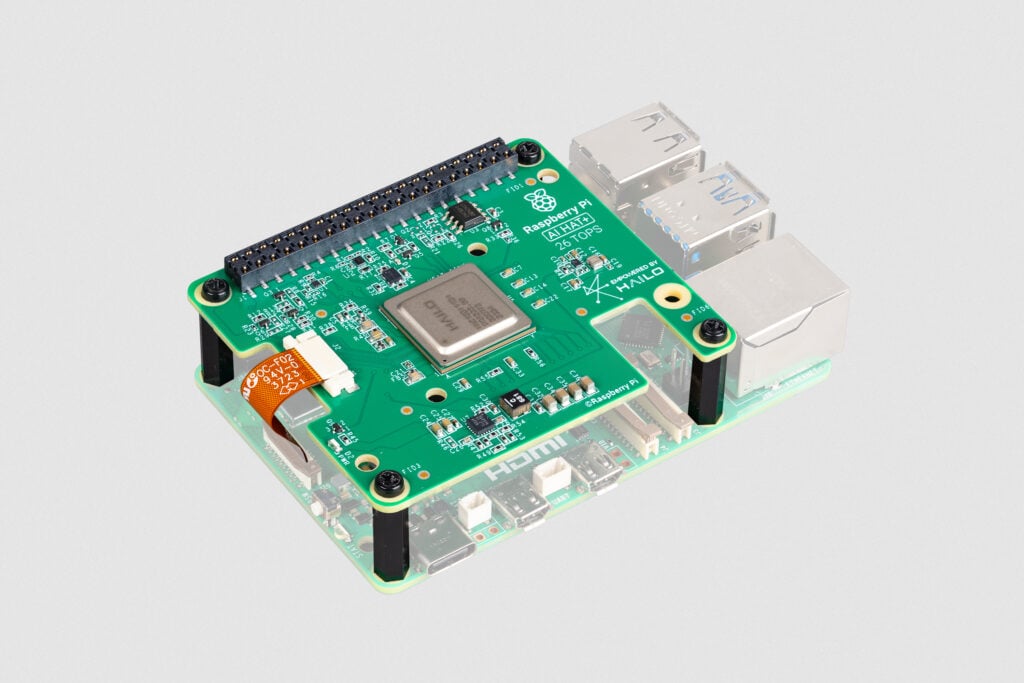
The Raspberry Pi AI HAT+ introduces two performance options: a 13 TOPS model for $70 and a 26 TOPS model for $110, both featuring Hailo AI accelerators for high-performance machine learning tasks. With the Hailo-8 chip integrated directly onto the PCB, the AI HAT+ simplifies setup and improves thermal management, making it ideal for demanding AI workloads like real-time image processing and running multiple neural networks simultaneously.
The new Raspberry Pi AI HAT+ will help run local LLMs by leveraging its high compute power (up to 26 TOPS) to handle intensive inference tasks efficiently, enabling faster responses and real-time language processing without relying on cloud services. This also allows for privacy-focused, edge AI applications by running LLMs directly on the device.
The new Raspberry Pi AI HAT can enhance the capabilities of Raspberry Pi devices when working with large language models (LLMs) by offloading computationally expensive tasks to dedicated hardware optimized for AI workloads. Here’s how it can help with LLMs:
-
Improved Performance for AI Tasks: The AI HAT is equipped with a neural processing unit (NPU) or a dedicated AI accelerator, which significantly boosts the Raspberry Pi’s ability to handle machine learning and deep learning tasks. This allows the Pi to run inference for LLMs more efficiently, delivering faster processing times than using its CPU alone. It can process natural language inputs, generate responses, and handle other tasks associated with LLMs at lower latencies.
-
Energy Efficiency: Running LLMs, especially during inference, is resource-intensive and can drain significant power. The AI HAT is designed to be energy-efficient, allowing edge devices like the Raspberry Pi to perform these tasks without consuming as much power as a traditional desktop or server. This is particularly beneficial in low-power environments or for projects where power consumption is a concern.
-
Edge AI Capabilities: With the AI HAT, Raspberry Pi devices can run LLMs directly on the edge, enabling real-time natural language processing (NLP) without needing to send data back to a cloud server. This is crucial for privacy-sensitive applications or environments where internet connectivity is limited or unreliable.
-
Scalability: The AI HAT allows for scalable AI applications. It can be used in distributed systems where multiple Raspberry Pi devices are deployed to run LLMs across a network, making it possible to build low-cost, scalable AI solutions that can handle language models in real-world applications, such as chatbots, assistants, or localized AI systems.
-
Real-time Applications: Given its AI-optimized hardware, the AI HAT makes it possible for the Raspberry Pi to be used in real-time applications, such as voice assistants or interactive robots, where fast responses to natural language queries are essential. LLMs can process and understand user inputs quickly without lag, making these interactions more seamless.
In summary, the Raspberry Pi AI HAT enables more powerful and efficient handling of LLMs on low-cost, compact devices like the Raspberry Pi, making AI more accessible at the edge, and enabling new use cases in real-time, low-power environments.